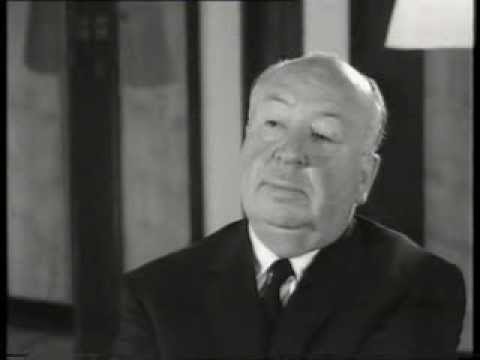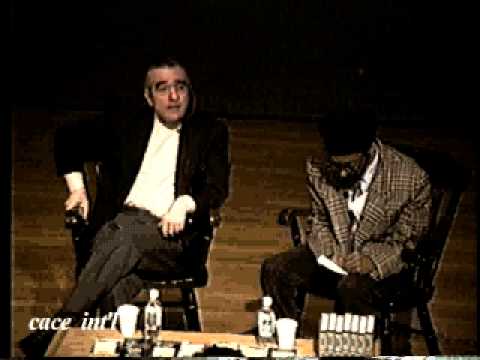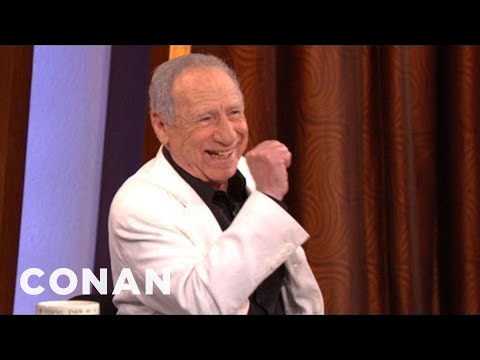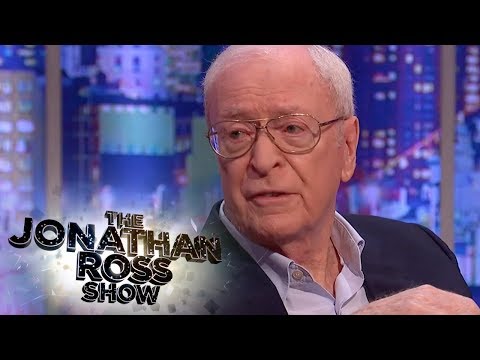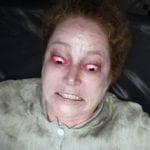“I don’t dream at night, I dream at day, I dream all day; I’m dreaming for a living.”—Steven Spielberg So here are ten things you might not know about some famous filmmakers.
10 Ovophobia
Alfred Hitchcock was the Master of Suspense. This brilliant filmmaker created scenes that will live on in horror history forever. However, in his personal life, he was peculiar and suffered from a variety of phobias. One of these included an intense fear of law enforcement, encouraged by his strict father, who would have him “put in jail” whenever he was naughty as a young boy. He carried this terror with him, fearing that, as an adult, he would mistakenly be arrested and thrown in prison for good. Hitchcock was also afraid of sex, heights, and, most bizarre of all, eggs. He made no secret of being an ovophobe, telling an interviewer once, “That white round thing without any holes… have you ever seen anything more revolting than an egg yolk breaking and spilling its yellow liquid? Blood is jolly, red. But egg yolk is yellow, revolting. I’ve never tasted it.”[1]
9 Father of Montage
Sergei Mikhailovich Eisenstein is particularly noted for his silent films Strike, Battleship Potemkin, and October, released in 1925 and 1927, respectively. Eisenstein is also well known for Alexander Nevsky and Ivan the Terrible. He was a pioneer of montage and was given the moniker “Father of Montage.” His view of the theory of montage was described as “an idea that arises from the collision of independent shots wherein each sequential element is perceived not next to the other, but on top of the other.” Eisenstein called the montage the “nerve of cinema” and implemented five methods of montage in his films, namely, metric, rhythmic, tonal, overtonal, and intellectual. Eisenstein’s techniques and skills were lasting and are still being used in filmmaking today.[2]
8 A Mutual Macabre Interest
Shelton Jackson Lee, known as Spike Lee, will forever be known for his uncompromising approach to controversial subject matter. His debut feature film, She’s Gotta Have It, was released in 1986 and was hailed at the Cannes Film Festival. The movie centered around the love life of a contemporary black woman. His next film, School Daze, was a satire of color prejudice, and his third, Do the Right Thing, was inspired by the tragic Howard Beach incident in which a black man was chased down and murdered by a group of white teens. Lee studied at New York University, where he shared classes with both Ang Lee and Oliver Stone. Also, one of the teachers just happened to be the one and only Martin Scorsese. They have remained steadfast friends ever since meeting at the university and even joined forces on the film Clockers in 1995. Lee and Scorsese share a common macabre interest as well; they both have “gruesome taste” when it comes to films. Scorsese once called Lee and said he had something to share with him. He ended up showing Lee a scene from Goodfellas in which a man’s head is gripped in a vice, and his eyes pop out. Lee recalled that they both couldn’t stop laughing and realized they shared the same kind of dark humor.[3]
7 Connections
The name Tim Burton conjures up movie scenes of fantasy and strange horror, including Dumbo, Mars Attacks, Alice In Wonderland, Sleepy Hollow, Beetlejuice, Sweeney Todd, and many more. Burton also developed an affinity for hiring actor Johnny Depp, casting him in eight of his films. In 1984, Burton was fired from Disney after completing “Frankenweenie” as a short film for the studio. The execs told him that they’d wasted their money on him and that the short film would frighten children. It turned out that Burton didn’t need Disney after all, as he enjoyed massive success in Hollywood on his own. This allowed him to recreate Frankenweenie into a successful full-length animation film that was released in 2012. Tim Burton’s influence runs deep, and he was asked by former American president Barack Obama in 2009 to help him throw a Halloween party at the White House. Burton went all out to recreate the tea party scene from Alice in Wonderland inside the State Dining Room and even recruited Johnny Depp to show up dressed as the Mad Hatter.[4]
6 Musical Moment in Wartime
Mel Brooks is not only an American filmmaker and composer but also an actor and comedian. His career spans over seven decades, and he started out as a writer and comic for Sid Caesar’s Your Show of Shows. As a director, he produced excellent comedic films, including Young Frankenstein, Silent Movie, Spaceballs, and the much-loved Robin Hood: Men in Tights. He is also an EGOT winner, having won Emmy, Grammy, Oscar, and Tony awards. Brooks served in WWII, and his duties included helping erect Bailey bridges strong enough to hold motorcades and tanks. Late one night, while he was busy helping to assemble such a bridge, Brooks heard German soldiers singing in the distance. Writing about the encounter, he recalled, “I thought the sound of the singing was terrible, and I decided to teach them what real singing sounded like. So, I picked up a big bullhorn, went to the bank of the river, and started singing à la Al Jolson.” He went on to write that he thought he heard applause coming from the soldiers once he’d finished the song, even though he admits that might have just been his imagination.[5]
5 Dress Code with a Difference
After working on and appearing in a variety of mumblecore films, Greta Gerwig collaborated on several films with her partner Noah Baumbach, including Greenberg, Frances Ha, and Mistress America. Her solo ventures include Lady Bird and the much-acclaimed Little Women (2019). Gerwig was never accepted into any MFA programs, which meant she had to learn the business as she worked. Once she was done with low-budget films, she got her big break in Greenberg. Those who work with Gerwig have nothing but praise for her. Where several film directors choose to run their set based on fear and intimidation, Gerwig wakes up in the morning thinking about her crew and how she can make the atmosphere on set fun and exciting. To that end, she would put on a prom dress and perch on the director’s chair during the filming of certain scenes in Lady Bird, with the idea in mind that she would make her crew feel that they were all on equal footing, including herself.[6]
4 A Whole Lot of Heart
Agnes Varda did great pioneering work to develop the French New Wave film movement of the 1950s and 1960s. She had a distinctive style, and her films focused on documentary realism, social commentary, and issues affecting women. Varda was the first female director to receive an honorary Oscar, and during her career, she received an Honorary Palme d’Or and Golden Lion, among several other accolades. Watch this video on YouTube Varda was one of the 343 women who signed the Manifesto of the 343, after admitting that she’d had an abortion when it had been illegal in France. She founded her own production company to ensure she had full control during the shooting and editing of her films. In 2013, Varda’s first art exhibition was held in Los Angeles, including photographs, short films, and sculptures. In 2017, two years before her death, Varda described herself as a “heart-shaped” potato growing again when she returned to directing with the documentary adventure film, Faces, Places. This was in reference to her heart-shaped potato art, which she started creating in 1953. After she died, people started leaving flowers and heart-shaped potatoes in front of her home in France, in tribute to the woman who taught us how to find beauty in the ordinary.[7]
3 The Making of a Star
In 1995, Kathryn Bigelow became the first woman to win the Saturn Award for Strange Days. She is also the first woman in history to have won the New York Film Critics Circle Award for Best Director twice—for 2008’s The Hurt Locker and 2012’s Zero Dark Thirty. The Hurt Locker also made her the first woman to win an Oscar for Best Director. During the filming of the 1991 classic Point Break, Bigelow was married to James Cameron, and the couple wrote most of the final script. They weren’t credited for it, with the screenplay being credited solely to W. Peter Iliff. After stepping in for Ridley Scott, Bigelow also refused to direct the movie without Keanu Reeves playing Johnny Utah. The studio preferred to use bigger stars like Johnny Depp, Val Kilmer, and Willem Dafoe, but Bigelow insisted that Reeves play the part. The movie ended up making Reeves a big star and opened doors for his next roles.[8]
2 Advertising Coffee Leads to Love
Speaking of Ridley Scott, he has been described as “the very best eye in the business” and is well known for movies such as Alien, Prometheus, Gladiator, Hannibal, Matchstick Men, and many more. He was inducted into the Science Fiction Hall of Fame in 2007 and was appointed Knight Bachelor in 2003. He takes perfection and detail very seriously, most likely due to his military and artistic background. This is taken to such an extent that Sigourney Weaver once complained that Scott cared more for his props and movie sets than he did for the cast. When Scott was still relatively unknown, he directed a Maxwell House coffee commercial starring Shakira Baksh in the early 1970s. Actor Michael Caine saw the advert and was so taken by Baksh’s beauty that he couldn’t get her out of his head. He started searching for her, and when he eventually found her, he called her eleven times before she finally agreed to meet him. Caine and Baksh married in 1973 and are still together in 2022.[9]
1 A Different Kind of Magic
In 1938, Orson Welles rose to fame in an unusual fashion. After directing and narrating a radio adaption of the novel The War of the Worlds, some listeners were so caught up that they believed an alien invasion was truly happening. He then gained even more notoriety for his first film, Citizen Kane, which was released in 1941. He followed this by releasing several more films which featured his distinctive directorial style of nonlinear narratives, chiaroscuro, deep focus shots, and long takes. Welles has two stars on the Hollywood Walk of Fame, one for his work in radio and the other for his excellence in filmmaking. What some may not know is that Welles was once a member of the Society of American Magicians and the International Brotherhood of Magicians and would regularly perform magic tricks at conventions. At the time of his death in 1985, Welles had completed a total of thirteen films, but also left fifteen more incomplete.[10] Read More: Mary and Me
